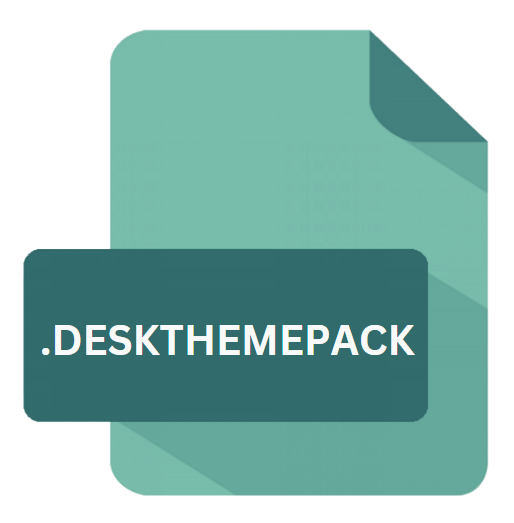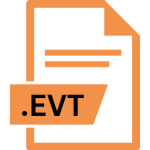.DESKTHEMEPACK File Extension

Windows 8 Desktop Theme Pack File
| Developer | Microsoft |
| Popularity | |
| Category | System Files |
| Format | .DESKTHEMEPACK |
| Cross Platform | Update Soon |
What is an DESKTHEMEPACK file?
The .DESKTHEMEPACK file extension is associated with Windows 8, representing a Desktop Theme Pack file. These files are designed to customize the appearance of the Windows operating system, including wallpapers, color schemes, sounds, icons, and other visual elements.
By encapsulating these customization elements into a single file, .DESKTHEMEPACK allows users to easily apply themes across different Windows installations or share themes with others.
More Information.
The history of the .DESKTHEMEPACK file is rooted in Microsoft’s ongoing efforts to improve the user experience through customizable desktop environments.
The concept of themes dates back to earlier versions of Windows, where users could modify basic visual elements such as the wallpaper, window colors, and screen savers.
With the advent of Windows 7, Microsoft introduced the .THEMEPACK format, which allowed users to bundle multiple visual elements into a single file for easy distribution and application.
When Windows 8 was launched, it came with a modernized user interface that included the introduction of the Start Screen and a more touch-friendly design.
Alongside these changes, Microsoft introduced the .DESKTHEMEPACK file format to support the more advanced customization features of the new OS.
This format allowed users to create and apply themes that included not only wallpapers and color schemes but also sound schemes, pointers, and other interface elements.
Origin Of This File.
The .DESKTHEMEPACK file format was introduced by Microsoft as a part of the Windows 8 operating system, which was released in 2012.
As an evolution of the previous .THEMEPACK format used in Windows 7, the .DESKTHEMEPACK format was designed to leverage the enhanced customization options available in Windows 8.
This file extension provided a more streamlined and user-friendly approach to personalizing the Windows desktop environment.
File Structure Technical Specification.
The .DESKTHEMEPACK file is a compressed archive that contains various resources required to apply a theme to the Windows desktop. The structure of a .DESKTHEMEPACK file typically includes the following components:
- Wallpaper Images: High-resolution images that serve as the desktop background. These images are often in JPEG or PNG format and can vary in size depending on the resolution supported by the display.
- Color Schemes: XML-based configuration files that define the color scheme for window borders, taskbars, and other visual elements.
- Sound Schemes: Audio files in WAV format that replace the default Windows sounds with custom sounds for events like notifications, startup, shutdown, and more.
- Cursors: Custom mouse pointers in
.CURor.ANIformat, which replace the default cursors. - Theme File: A
.themefile that acts as a configuration file, tying together all the components mentioned above. This file contains metadata about the theme, including paths to the images, colors, sounds, and cursors used in the theme.
The .DESKTHEMEPACK file is essentially a ZIP archive, though it uses a different extension and structure to integrate seamlessly with the Windows 8 theme system. When a user applies a .DESKTHEMEPACK file, Windows decompresses the contents and applies the theme according to the settings defined in the theme file.
How to Convert the File?
Converting a .DESKTHEMEPACK file to another format can be challenging due to its specific structure and integration with Windows 8. Users can manually extract the contents of a .DESKTHEMEPACK file using a file decompression tool like WinRAR or 7-Zip:
- Extract the .DESKTHEMEPACK File: Rename the file extension from .DESKTHEMEPACK to
.ZIPand use a decompression tool to extract the contents. - Convert Individual Elements: Once extracted, users can convert the individual elements (e.g., images, sounds) to different formats as needed. For example, wallpapers can be converted from JPEG to PNG using an image editor, or sound files can be converted using audio conversion software.
- Create a New Theme: Users can then create a new theme using the extracted elements in another format, such as
.THEMEPACKfor Windows 7 or as individual components for other operating systems.
Advantages And Disadvantages.
Advantages:
- Ease of Use: The .DESKTHEMEPACK format simplifies the process of personalizing the Windows desktop. Users can download or create a theme, apply it with a single click, and immediately see the changes.
- Portability: Since all theme elements are packaged into a single file, users can easily share their themes with others or transfer them between different Windows 8 installations.
- Comprehensive Customization: The format supports a wide range of customization options, including wallpapers, colors, sounds, and cursors, providing a unified theme experience.
- Compression: The compressed nature of the .DESKTHEMEPACK file reduces the file size, making it easier to distribute themes over the internet or store them on disk.
Disadvantages:
- Windows 8 Specific: The .DESKTHEMEPACK format is specifically designed for Windows 8 and is not natively compatible with other versions of Windows, such as Windows 7 or Windows 10. This limits the usability of themes created in this format.
- Limited Customization Options: While the .DESKTHEMEPACK format allows for comprehensive customization, it does not support certain advanced features available in other theme formats or third-party applications.
- Dependency on Windows Interface: The effectiveness of a theme can be limited by the user interface of Windows 8 itself. Users who prefer a different visual style or who use third-party customization tools may find the .DESKTHEMEPACK format restrictive.
How to Open DESKTHEMEPACK?
Open In Windows
Windows 8 and Later (Windows 8, 8.1, 10, 11):
- Double-Click: The simplest way to open a .DESKTHEMEPACK file is to double-click it. Windows will automatically apply the theme.
- Right-Click & Personalize: Alternatively, you can right-click on the desktop, select “Personalize,” and manually browse to the .DESKTHEMEPACK file to apply it.
Windows 7 and Earlier:
- Unsupported: Windows 7 and earlier do not natively support .DESKTHEMEPACK files.
- Workaround: You can rename the file extension from .DESKTHEMEPACK to
.zipand extract the contents using a tool like WinRAR or 7-Zip. You can then manually apply the wallpapers and sounds, but you won’t get the full theme experience.
Open In Linux
- Unsupported: Linux systems do not natively support .DESKTHEMEPACK files.
- Workaround: Similar to older versions of Windows, you can rename the .DESKTHEMEPACK file to
.zipand use an archive manager likeArchive Manageror7-Zipto extract the contents. You can then manually apply the wallpapers and potentially customize your Linux desktop environment using tools like GNOME Tweak Tool or KDE Plasma.
Open In MAC
- Unsupported: macOS does not support .DESKTHEMEPACK files.
- Workaround: Rename the .DESKTHEMEPACK file to
.zipand extract it using a built-in tool likeArchive Utilityor a third-party app likeThe Unarchiver. You can then manually apply the wallpapers and sounds, but other theme components won’t be compatible with macOS.
Open In Android
- Unsupported: Android does not support .DESKTHEMEPACK files.
- Workaround: You can rename the file to
.zipand use a file manager app likeZArchiverorWinZipto extract the contents. Wallpapers can be set manually from the extracted images, but other components won’t work on Android.
Open In IOS
- Unsupported: iOS does not support .DESKTHEMEPACK files.
- Workaround: Rename the .DESKTHEMEPACK file to
.zipand use an app likeiZiporDocuments by Readdleto extract the contents. Wallpapers can be set manually from the Photos app, but other theme elements will not be usable on iOS.











